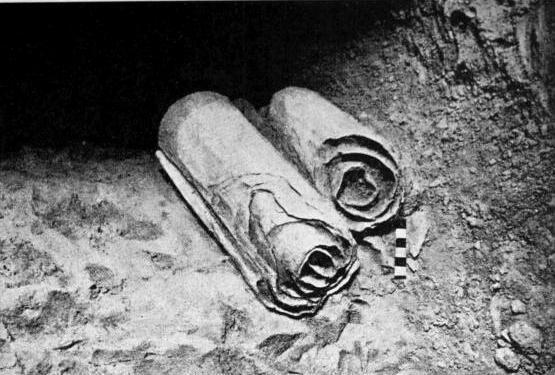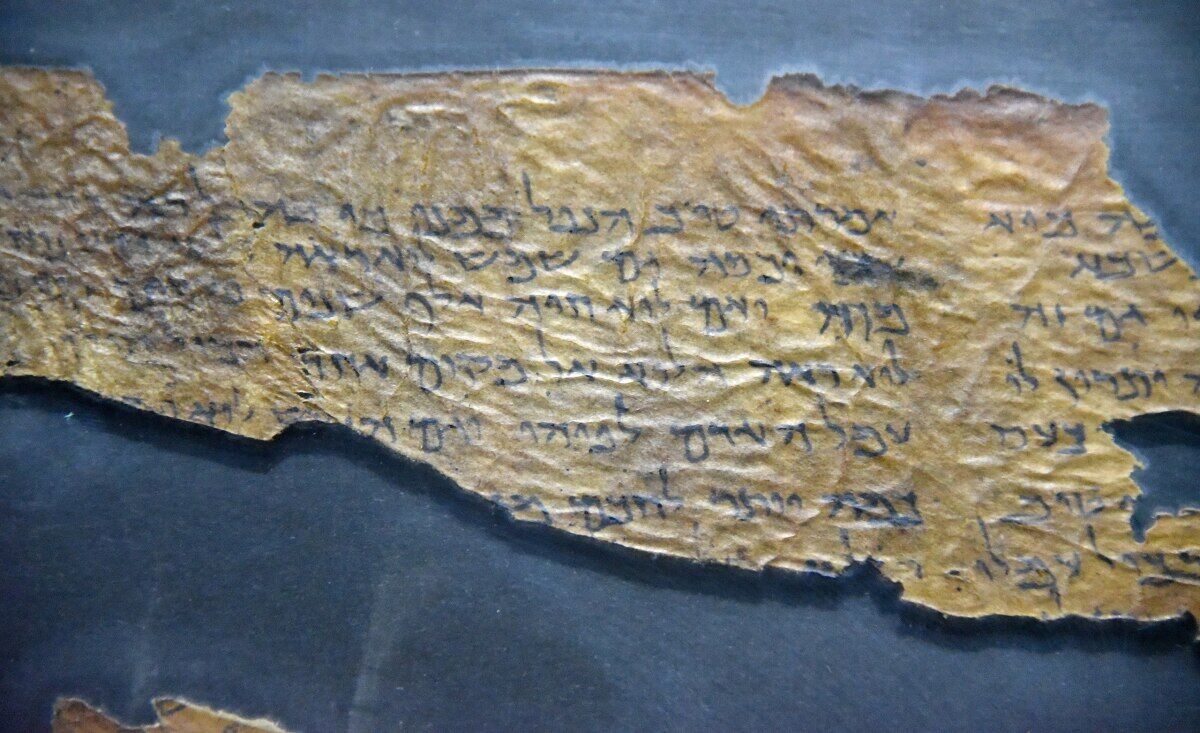New Research Reveals Dead Sea Scrolls Older Than Previously Thought
Brand-new research, utilizing artificial intelligence (AI)—in conjunction with radiocarbon dating (14C)—is corroborating the earlier composition of biblical texts, upending various theories of later development.

This research concerns the famous Dead Sea Scrolls—a massive early trove of thousands of fragments of biblical (and other) texts found buried within caves in the Judean Desert—most of which have been dated to between the second century b.c.e. to second century c.e. The trove is already famous for containing portions of nearly all the books of the Hebrew Bible, at a such an early period. Yet many of these manuscripts, according to the new research, should be dated significantly earlier than researchers previously thought.
Former research and dating of the Dead Sea Scrolls relied on rather more cumbersome paleographic approaches, manually analyzing the development of writing style in order to determine dates, with very few firmly established time stamps to go on. The new AI program, named Enoch, is calling into question the original dating of many of these scrolls.
In a new paper published Wednesday in the scientific journal PLOS One, titled “Dating Ancient Manuscripts Using Radiocarbon and AI-Based Writing Style Analysis,” authors Mladen Popović, Maruf A. Dhali, Lambert Schomaker, Johannes van der Plicht, Kaare Lund Rasmussen, Jacopo La Nasa, Ilaria Degano, Maria Perla Colombini and Eibert Tigchelaar reveal “Enoch, an AI-based date-prediction model, trained on the basis of 24 14C-dated scroll samples.” They continue (emphasis added):
By applying Bayesian ridge regression on angular and allographic writing style feature vectors, Enoch could predict 14C-based dates with varied mean absolute errors (MAEs) of 27.9 to 30.7 years. In order to explore the viability of the character-shape based dating approach, the trained Enoch model then computed date predictions for 135 non-dated scrolls, aligning with 79 percent in paleographic post-hoc evaluation. The 14C ranges and Enoch’s style-based predictions are often older than traditionally assumed paleographic estimates, leading to a new chronology of the scrolls and the redating of ancient Jewish key texts that contribute to current debates on Jewish and Christian origins.
Multiple thousands of manuscript fragments exist—obviously, not all of them can be subjected to the expensive and somewhat-destructive process of carbon dating. But on the basis of accurately proven analysis of select carbon-dated parchments, Enoch can be turned loose on the broader collection. The exciting new research has remarkable potential and significant implications—not least in the redating of some of the key prophetic biblical works found among the Dead Sea Scrolls.
Bringing Back Daniel
The text of Daniel is a key case in point and is “one of the most significant findings of the 14C results,” the authors wrote.
The biblical setting for the Prophet Daniel and his book is during the sixth century b.c.e. Most scholars, however, place the origin of the text centuries later, broadly in attempts to postdate the composition of its many detailed events and prophecies contained within its latter chapters, especially concerning the Seleucid and Ptolemaic Empires (312–63 b.c.e. and 305–30 b.c.e., respectively) and in particular, Antiochus iv Epiphanes (who reigned 175–164 b.c.e.).
4Q114 is a Dead Sea Scrolls manuscript preserving the text of Daniel 8-11, “which scholars date on literary-historical grounds to the 160s b.c.e.,” the authors wrote. Even this date is long prior to certain early theories for the composition of the book (with relation to the much-debated subject of Daniel’s prophecies concerning even later events and entities, such as the Roman Empire). Yet the new research tantalizingly takes this back a step further again, with an “accepted 2σ calibrated range for 4Q114, [of] 230–160 b.c.e.”
It’s not the only biblical manuscript from the collection that has been significantly predated. Some of the scrolls already believed to be the oldest in the collection—fragments of Jeremiah and Samuel, originally dated to the third century b.c.e.—have been submitted as dating to as early as the fourth century b.c.e. Ecclesiastes is another text whose fragments have been dated much earlier within the third century b.c.e. by Enoch, pushing the boundaries of the late-composition theories held by many scholars.

It’s worth noting that the accepted 79 percent of dates returned by Enoch following “post-hoc evaluation” are just those dates believed by the researchers to be “realistic”—the “remaining 21 percent judged to be too old, too young or indecisive,” reports Haaretz, following an interview with the lead researcher (“Dead Sea Scrolls May Be Older Than We Thought, AI-Based Study Says”). “Given that Enoch produces a range of likely dates for an artifact rather than a specific date, it’s hard to specifically say how many scrolls should be backdated, as parts of those ranges often overlap with those provided by radiocarbon or traditional paleographic analysis, Popović says.” Nevertheless, “broadly speaking, it now seems that the oldest scrolls date to the fourth century b.c.e., and there is a larger amount than we thought from the third century b.c.e., in the Hellenistic period,” as opposed to the later Hasmonean period (and theories of Hasmonean development).
There are two particular script-types that have long been highlighted among the Dead Sea Scrolls trove: the earlier “Hasmonean type” script and the later “Herodian type” script. The AI-based findings reveal the “Hasmonean type” script to be significantly older, and the “Herodian type” to be likewise—also, that the Herodian existed concurrently with much of the use of the Hasmonean, contrary to assumptions of an evolutionary sequence.
“Scholars often assume that the rise and expansion of the Hasmonaean kingdom from the mid-second century b.c.e. onward caused a rise in literacy and gave a push to scribal and intellectual culture,” wrote Popović et al. in their PLOS One paper. “Yet the results of this study attest to the copying of multiple literary manuscripts before this period.”
“The results of this study thus dismantle unsubstantiated historical suppositions and chronological limitations,” they conclude.
The discovery of the Dead Sea Scrolls trove in the late 1940s set off an earthquake in the archaeological and biblical studies communities. It seems like we may well be experiencing the foreshocks of another.
https://twitter.com/CamillaLxx/status/1930525776140554266